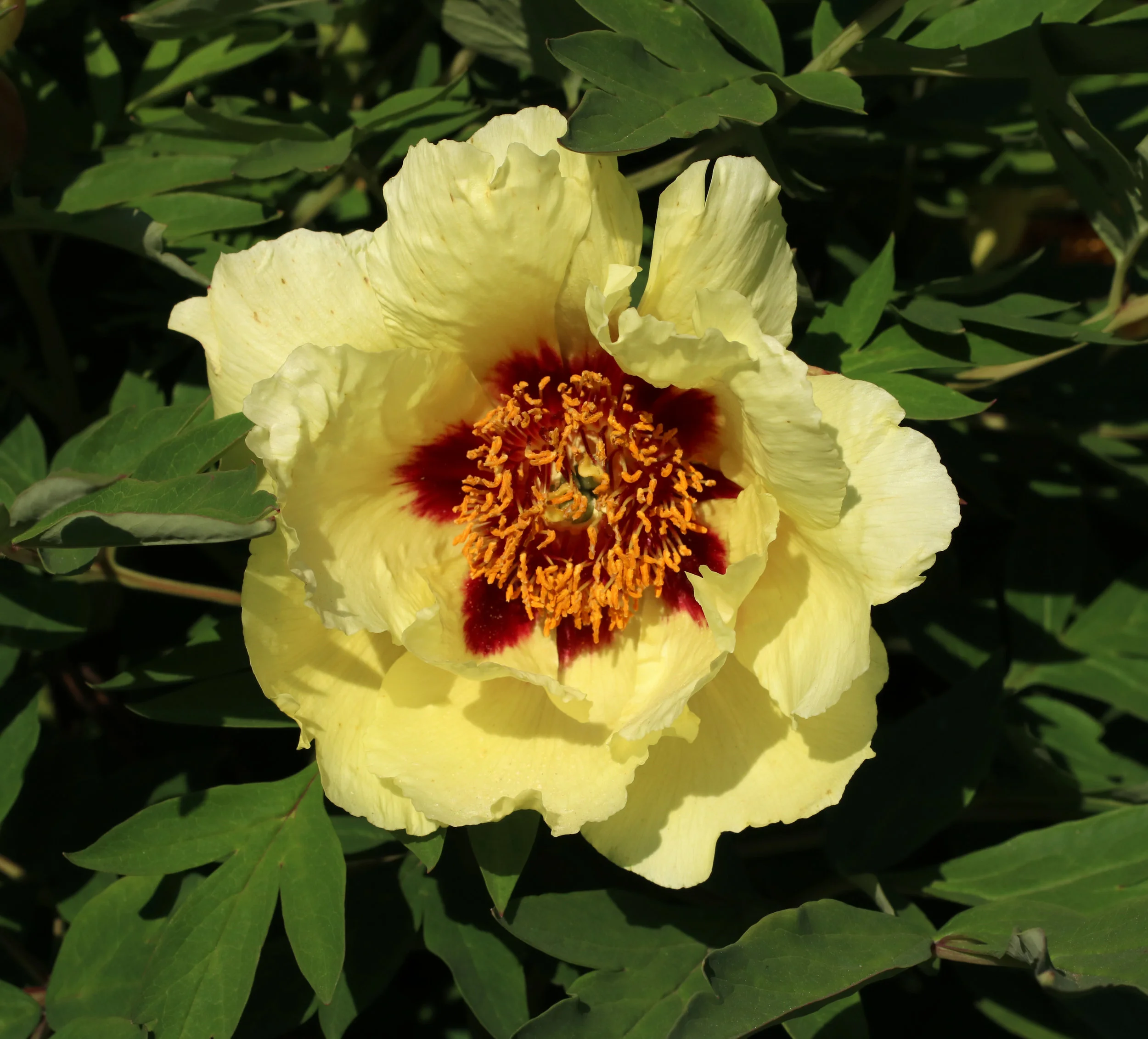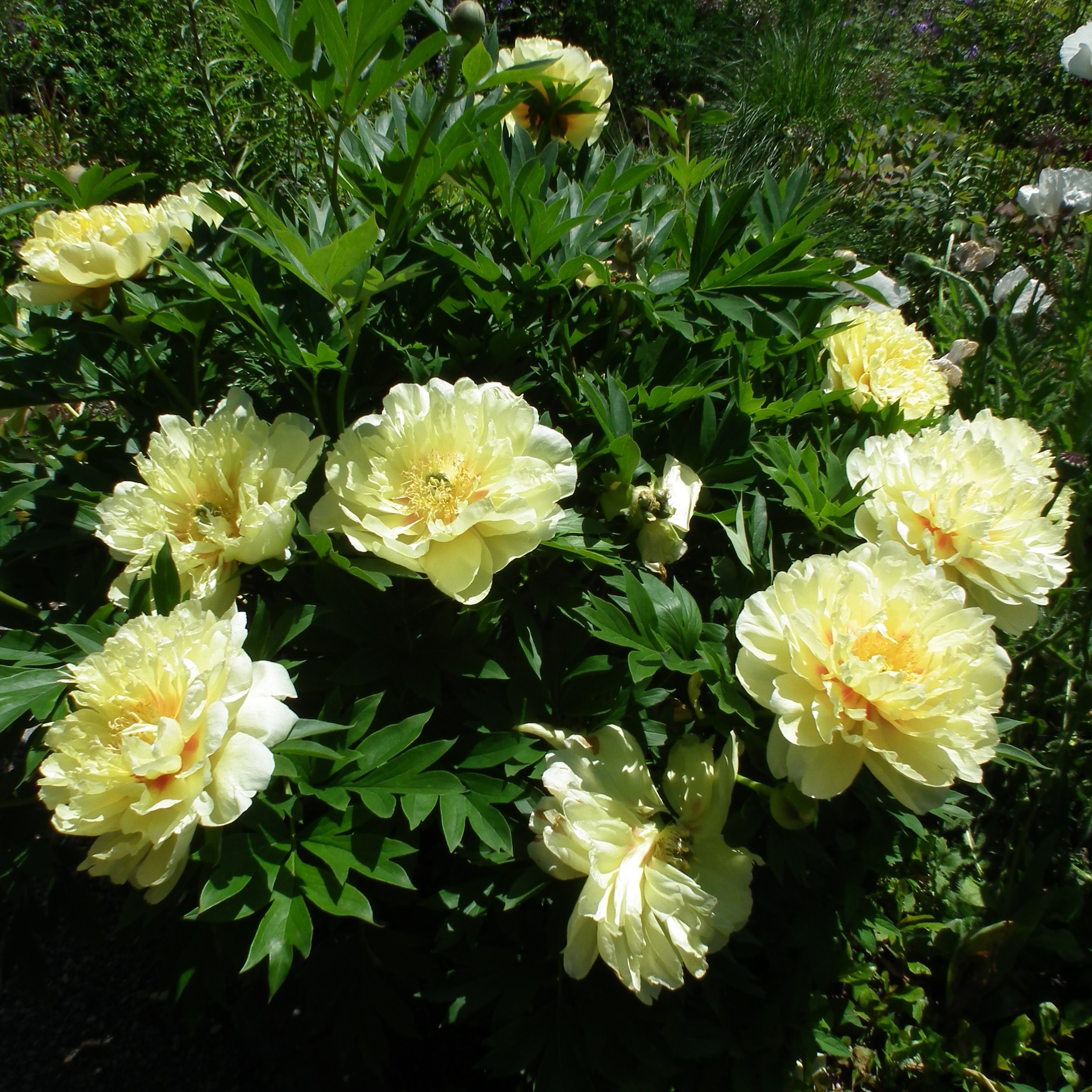all about peonies
"And the wind upon its way whispered the boughs of May, and touched the nodding peony flowers to bid them waken." ~ Siegfried Sassoon
The beauty of peonies cannot be overstated - their full blooms rival the lushness of a cabbage rose or even the many-petaled ranunculus. The fact that they bloom early in the season, with many possessing a wonderful scent and are long-lived - some have been known to live over 100 years - make them a must in any perennial garden.
Peonies have been grown in China for over 3,000 years. Valued first for their medicinal qualities - white peony root is one of the oldest remedies in traditional Chinese medicine, it is used to treat conditions such as convulsion - they eventually became the flower associated with the Chinese emperors due to their extraordinary beauty. The Chinese name for the peony is “Sho Yu,” which means “most beautiful.”
According to Greek myth, the peony is named after Paeon, a student of Asclepius, the Greek god of medicine. Asclepius became jealous of his talented pupil when he cured a wound on Pluto using milk from the root of a peony. Zeus saved him from the wrath of Asclepius by turning him into a peony flower.
Native to Asia, Southern Europe and Western North America, peonies became popular in European and North American gardens starting in the 1700s. There are three types of peonies grown today: herbaceous, tree, and intersectional. Among the three types there are early, midseason and late blooming varieties, and there are 6 flower types: single, anemone, Japanese, semi-double, double, and bomb. Some are highly scented - like “Festiva Maxima” while some have no scent at all.
Herbaceous peony blooms
Herbaceous peonies die back to the ground in winter and regrow in the spring. Paeonia officinalis is a herbaceous peony for warm climates which grows in zones 8-10. Preferring full sun to part shade, it reaches 18 to 24 inches tall with pink or red flowers that are single. Paeonia lactiflora is a herbaceous peony that grows in zones 3 through 8 featuring white or pink flowers on 12-36 inch stalks. There are also herbaceous woodland peonies, p. japonica, which grow in the shade. A native of Japan, these woodland peonies are hardy in zones 5-8, form clumps reaching 18” tall and wide and are deer-resistant.
Tree peony “Hai Huang” (High Noon)
Tree peonies, Paeonia suffruticosa, are woody, deciduous shrubs that grow in zones 4 through 8. Known as the “king of flowers” in China, tree peonies were first introduced in Europe and planted in Kew Gardens in 1789. Growing 3-5 feet tall and wide, tree peonies have flowers that can be up to 6 inches across. Tree peonies prefer partial sun and well-drained soil. Since they do not die back to the ground they are more sensitive to the cold during winter.
Itoh peony in full bloom (photo courtesy: by 4028mdk09 - own work, CC BY-SA 3.0, https://commons.wikimedia.org/w/index.php?curid=10554904)
In 1948 Toichi Itoh, a Japanese nurseryman, succeeded in crossing tree peonies and herbaceous peonies to create a new class of peonies called intersectional hybrids (Itoh peonies). The result was a peony with herbaceous growth habits and the large, beautiful flowers that tree peonies are known for. Growing in zones 4-9, Itoh peonies can reach 3-4 feet tall and prefer full to partial sun. Itoh peonies will die back to the ground in winter as the herbaceous peonies do.
HOW TO PLANT
The best time to plant peonies is in the fall before the first frost occurs. Peonies dislike being transplanted so choosing a location where they can remain undisturbed - for 100 years possibly! - is important. Look for an area with at least 6 hours of sun that has good drainage. If planting must be delayed until springtime blooming may not occur for two years or more. The eyes of the peony should be placed no more than 2 inches below the soil surface, if planted too deep they may fail to bloom.
WHY DON’T THEY BLOOM?
In addition to improper depth when planting, other reasons for peonies to fail to bloom include not receiving enough sun (6+ hours), poorly-drained soil, overcrowding (space 3’ apart), too much fertilizer (keep away from lawn edges to prevent leaching of nitrogen fertilizer which promotes leafy growth instead of blooms, apply compost in the fall 6” from stems), premature removal of the foliage (cut back in fall when stems naturally die back), lack of water during spring drought, buds lost to frost, or recent transplant shock.
Ants will not cause any harm to peony blooms
PESTS
Ants are frequently seen on peonies, but contrary to popular belief they do not cause any harm, they are just attracted to the wax on the buds. Several other insects, however, can cause potential problems. The oystershell scale, which appears as a bump on stems or leaves of tree peonies where it feeds, causes leaf yellowing, wilting and premature petal drop. Horticultural oil applied in late winter to early spring when the scales are still crawling is the suggested treatment.
Chafer beetles, another pest, look similar to Japanese beetles. They can be removed by hand or Neem oil can be used as an organic option. Thrips and mealybugs can also pose a problem. Insecticidal soap, horticultural oil or a forceful stream of water to knock the bugs off are effective remedies.
DISEASES
Peonies are generally hardy but are susceptible to fungal diseases, especially botrytis blight and powdery mildew. Botrytis, which causes leaves, stems and flowers to blacken, can be treated with an application of a sulfur or copper fungicide. Powdery mildew, which causes the leaves to appear as if covered in a white powder, can be treated with horticultural oil or a mixture of 1 quart water + 1 tsp. baking soda + a few drops of dish soap.
To prevent diseases from occurring or spreading proper sanitation is key. After the first frost in autumn or early winter, trim off the foliage and any diseased or damaged wood on tree peonies and cut back the herbaceous and Itoh peonies to 2” above ground. Clear the ground of plant debris around all peonies to avoid harboring fungal diseases.
FUN FACT
The Netherlands is the largest producer of peony cut flowers in the world-producing over 50 million stems annually - with “Sarah Bernhardt” being the most popular variety at 20 million stems.





